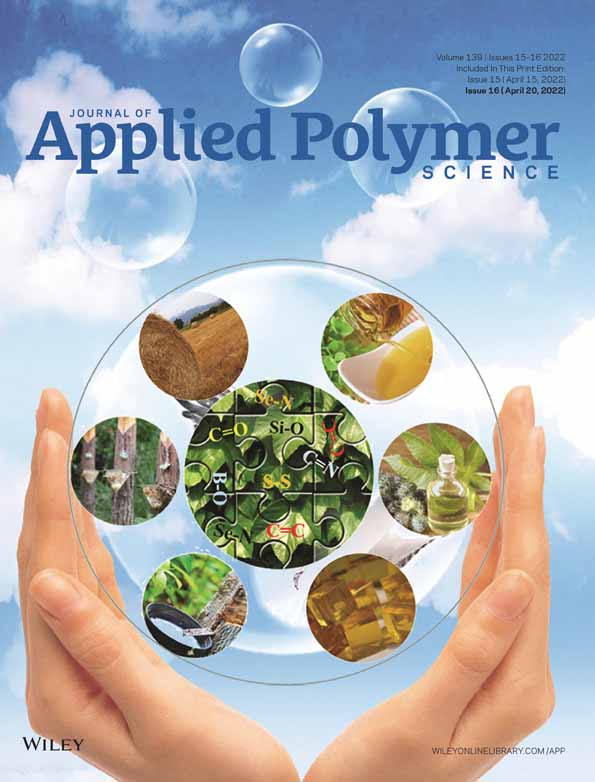Preparation and characterization of self-emulsifying poly(ethylene glycol) methyl ether methacrylate grafted polyacrylate copolymers modified by waterborne polyester
Abstract
The high molecular weight polyacrylate self-emulsifying emulsion with 20% hydroxyl monomer and 50% solid content was prepared. Waterborne polyester was used to modify the acrylate resin. Besides acrylic acid (AA) and methacrylic acid (MAA), poly(ethylene glycol) methyl ether methacrylate (PEGMEMA) was also used as functional monomer to stabilize the polymerization process and improve the properties of the emulsion. The effects of the amount of waterborne polyester (WP), ammonium persulfate (APS), poly(ethylene glycol) methyl ether methacrylate (PEGMEMA), methacrylic acid (MAA)/acrylic acid (AA) monomer ratio, butyl acrylate (BA)/styrene (St) monomer ratio on the molecular weight, particle size, viscosity, storage stability, and cured film properties of the polyacrylate emulsion were investigated. The average molecular weight of the modified polyacrylate was up to about 2.5 × 104 g mol−1. The emulsion remained stable after 6 months at room temperature. Transmission electron microscope (TEM) images showed that the latex particles had core-shell structure. The films cured with melamine formaldehyde (MF) resin showed excellent water resistance, adhesion, and hardness.
Open Research
DATA AVAILABILITY STATEMENT
Data sharing is not applicable to this article as no new data were created or analyzed in this study.




